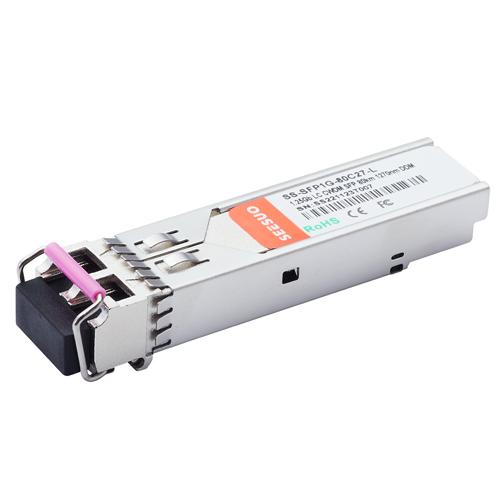- Related articles
- Optical Transceivers for Cisco WS-C3750E-48PD-E Switch
- Optical Transceivers for Cisco N3K-C3064PQ-10GX= Switch
- Applicable to 1000BASE-BX Standard optical transceiver models
- Overview Cisco GLC-LH-SM Of SFP Transceiver Module
- Optical Transceivers for Cisco IE-2000-16PTC-G-NX Switch
- All Cisco DWDM-XENPAK-30.33's information (List price, Specs, Datasheet PDF, Compatibility
- Optical Transceivers for Cisco SF500-48P-K9-G5 Switch
- Optical Transceivers for Cisco N3K-C3172PQ-10GE Switch
- Difference between single-mode and multi-mode SFP
- Cisco Optical Module Decryption Method

Definition
SFP+ transceivers are expected to perform at data speeds of up to five gigabits per second (5 Gbps), and possibly higher. Because SFP+ modules can be easily interchanged, electro-optical or fiber optic networks can be upgraded and maintained more conveniently than has been the case with traditional soldered-in modules. Rather than replacing an entire circuit board containing several soldered-in modules, a single module can be removed and replaced for repair or upgrading. This can result in substantial cost savings, both in maintenance and in upgrading efforts as compared to old inbuilt modules.
“SFP” stands for “Small Form-Factor Pluggable,” which also serves the very same purpose as GBIC. Considering that space in a server location is quite limited, using SFP lets you put more within one rack unit. Because of this single difference, SFP rapidly gained popularity with administrators who want to maximize their space. SFP is still widely being used nowadays but is also under pressure from newer standards like SFP+.
Differences
• SFP doesn't support 10G transmission data rate that means they can't be used on the same network.
• From the price, SFP+ is more expensive than SFP
• SFP is based on IEEE802.3 and SFF-8472 while SFP+ is based on SFF-8431.
Applications
The applications of the device are as follows:
• Fiber Channel Links
• Gigabit Ethernet (1000Base-BX)
• Point to Point FTTH Application
• Used for Hot swappable to maximize uptime and simplify serviceability, Flexibility of media and interface choice on a port-by-port basis, so you can “pay as you populate” ,Robust design for enhanced reliability and supports digital optical monitoring (DOM) capability.
Cisco SFP Module
The industry-standard Cisco® Small Form-Factor Pluggable (SFP) Gigabit Interface Converter links your switches and routers to the network. The hot-swappable input/output device plugs into a Gigabit Ethernet port or slot. Optical and copper models can be used on a wide variety of Cisco products and intermixed in combinations.
Conclusion
SFP+ cable today is tremendously popular. It is aimed at providing hardware, software, and service to consumers, small or medium-sized business and large enterprises. The applications including a vast range of hardware widely used in printing, digital imaging, software, computing as well as network service are serviced by the devices.






















































